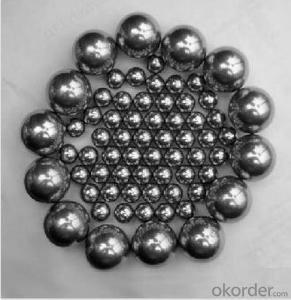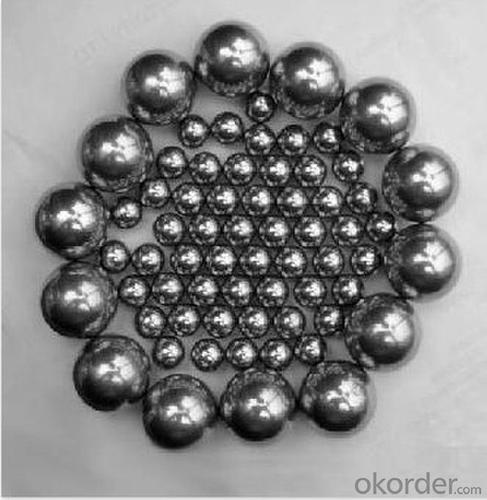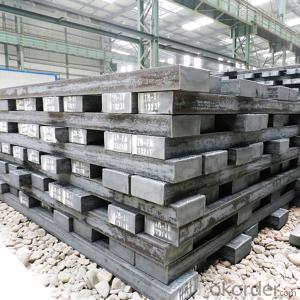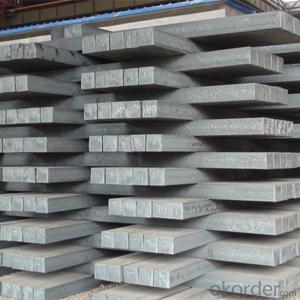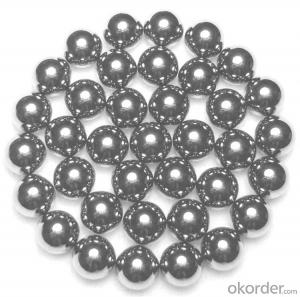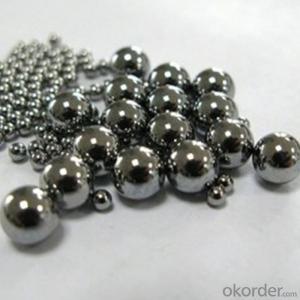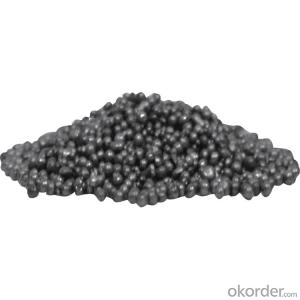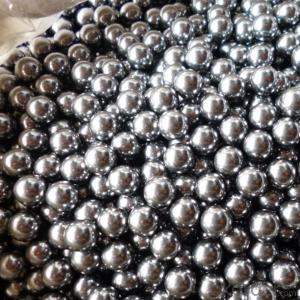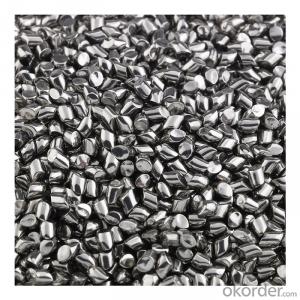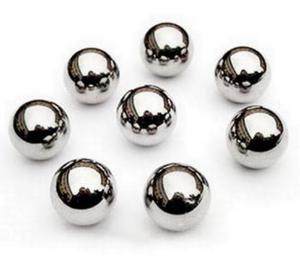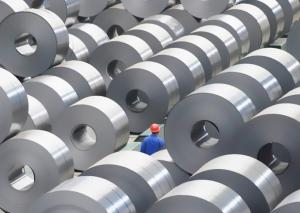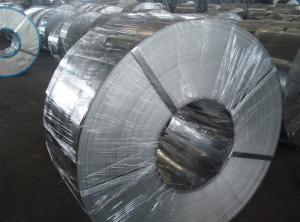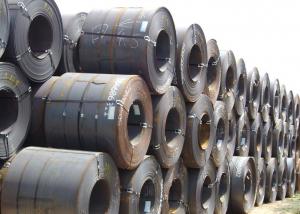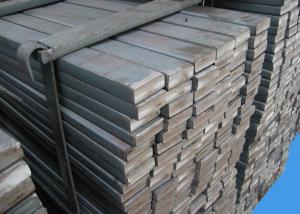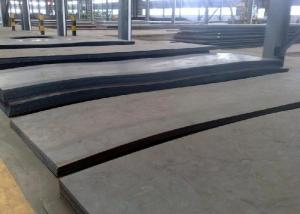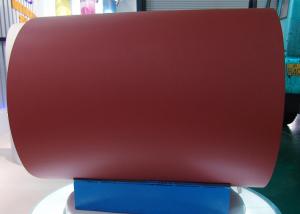SUS304 Steel Shot 2mm Chemical Product Stainless Steel Ball
- Loading Port:
- China main port
- Payment Terms:
- TT OR LC
- Min Order Qty:
- 1 m.t.
- Supply Capability:
- 10000 m.t./month
OKorder Service Pledge
Quality Product, Order Online Tracking, Timely Delivery
OKorder Financial Service
Credit Rating, Credit Services, Credit Purchasing
You Might Also Like
Specification
Standard:
ASTM
Technique:
Cold Rolled
Shape:
Round
Surface Treatment:
Dry
Steel Grade:
304
Certification:
ISO
Thickness:
0.045-2.8mm
Length:
0.045-2.8mm
Net Weight:
20kg/bag
Packaging:
Standard Export Packing
Product Description
Stainless Steel Ball
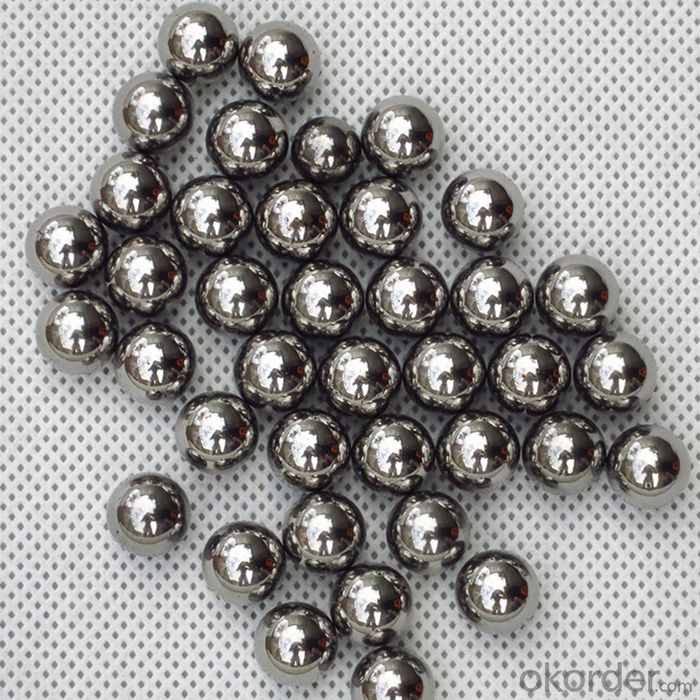
1. Used in where good corrosion resistance is important, but hardness is not.
2. Offer good resistance to atmospheric corrosion, dyes, food environments, sterilizing solutions and many organic and inorganic materials.
| Stainless steel ball AISI 304 | ||||||||
| 1. Material | AISI 304/ SUS 304/ Wks 1.4301 | |||||||
| 2. Size Range | 1mm-180mm | |||||||
| 3. Grade | G40-1000 | |||||||
| 4. Hardness | 25-39 HRC | |||||||
| 5. Characteristic | (a)Good resistance to corrosion (b)Apply in where material toughness and resistance to corrosion are more important than hardness (c)Good corrosion resistance in the food environment, oxidizing solutions and most organic chemicals | |||||||
| 6. Magnetic | Much little | |||||||
| 7. Application | Valves, finger pumps, Aggressive applications without mechanical efforts | |||||||
| 8. Chemical composition | ||||||||
| C% | Si% | Mn% | Cr% | Ni% | P% | S% | N% | |
| min. | --- | --- | --- | 17.0 | 8.0 | --- | --- | --- |
| max. | 0.07 | 1.00 | 2.00 | 19.5 | 10.5 | 0.045 | 0.015 | 0.11 |
| 9.Packing | Standard: 10kg or 20kg per carton, 1 ton per pallet or as customer required | |||||||
| 10.Conditioning | dry or oiled | |||||||
| 11.Delivery time | Stock within a short time or 20 days. | |||||||
- Q: What are the different types of steel bars and their uses?
- There are several types of steel bars, each with its own unique properties and uses. Some common types include carbon steel bars, alloy steel bars, stainless steel bars, and tool steel bars. Carbon steel bars are widely used in construction and general manufacturing due to their strength and affordability. Alloy steel bars are known for their exceptional strength and durability, making them suitable for applications requiring high strength and resistance to wear and tear. Stainless steel bars are corrosion-resistant and commonly used in food processing, architectural structures, and medical equipment. Tool steel bars are specifically designed for toolmaking, offering high hardness, toughness, and heat resistance. Overall, the different types of steel bars cater to a wide range of industries and applications.
- Q: What are the different types of steel sections?
- There are various types of steel sections used in construction, including I-beams, H-beams, U-channels, angles, and flat bars. These sections have different shapes, sizes, and strengths, making them suitable for various structural applications.
- Q: How is steel used in the production of tools and machinery?
- Steel is used in the production of tools and machinery due to its exceptional strength, durability, and versatility. It is commonly utilized to create blades, gears, bearings, and structural components that require high strength and resistance to wear and tear. Additionally, steel can be easily shaped and machined, making it ideal for manufacturing various types of tools and machinery.
- Q: How is steel used in the construction of theme parks and recreational facilities?
- Steel is a crucial material in the construction of theme parks and recreational facilities as it provides strength, durability, and versatility. It is commonly used to create sturdy frameworks for roller coasters, water slides, and other thrilling attractions. Steel is also utilized in the construction of grand entrance arches, large canopies, and towering structures that add to the aesthetic appeal of these facilities. Additionally, steel is employed in the creation of support beams, trusses, and other load-bearing elements, ensuring the safety and stability of the entire structure.
- Q: How are steel products used in the construction of religious buildings and places of worship?
- Steel products are commonly used in the construction of religious buildings and places of worship due to their strength, durability, and versatility. They are utilized in various structural components, such as beams, columns, and trusses, to provide stability and support to the entire structure. Steel is also used for roofing, cladding, and facade systems, offering protection against weather elements while adding aesthetic appeal. Additionally, steel is used in the construction of stairs, railings, and decorative elements, enhancing the overall design and functionality of religious buildings.
- Q: How are steel beams used in building structures?
- Steel beams are used in building structures to provide structural support and stability. They are commonly used as load-bearing elements to transfer the weight of the building to its foundations. Steel beams can span long distances and can support heavy loads, making them ideal for constructing large and tall structures like skyscrapers and bridges. Additionally, steel beams can be easily fabricated and installed, allowing for efficient construction processes.
- Q: How is steel used in the manufacturing of transportation equipment?
- Steel is commonly used in the manufacturing of transportation equipment due to its strength, durability, and ability to withstand high levels of stress. It is utilized in various components such as frames, bodies, engine parts, and suspension systems, contributing to the overall structural integrity and safety of vehicles, ships, trains, and airplanes.
- Q: How is steel used in the production of oil and gas pipelines?
- Steel is commonly used in the production of oil and gas pipelines due to its strength, durability, and resistance to corrosion. It is used to construct the main body of the pipeline, providing a secure and reliable means of transporting oil and gas over long distances. Additionally, steel pipes are able to withstand high pressures and extreme temperatures, making them suitable for the demanding conditions of the oil and gas industry.
- Q: What are the different types of steel bars and their applications?
- There are several different types of steel bars, each with its own unique properties and applications. Some common types include round bars, square bars, flat bars, and hexagonal bars. Round bars are often used in construction, engineering, and manufacturing industries for applications such as shafts, fasteners, and machinery components. Square bars are commonly used in construction, fabrication, and manufacturing projects, particularly for making structural supports and frames. Flat bars are versatile and widely used in applications such as braces, brackets, and trim work. Hexagonal bars are often utilized in machinery and equipment manufacturing. Overall, the specific type of steel bar chosen depends on the intended application and the desired characteristics necessary for that particular use.
- Q: What are the applications of steel forgings in the oil and gas industry?
- Steel forgings have numerous applications in the oil and gas industry. They are commonly used in critical components such as valves, flanges, wellheads, and drilling equipment. The high strength and durability of steel forgings make them ideal for withstanding extreme operating conditions, including high pressure and temperature environments. Additionally, steel forgings offer excellent resistance to corrosion, erosion, and fatigue, ensuring the long-term reliability and safety of oil and gas facilities.
Send your message to us
SUS304 Steel Shot 2mm Chemical Product Stainless Steel Ball
- Loading Port:
- China main port
- Payment Terms:
- TT OR LC
- Min Order Qty:
- 1 m.t.
- Supply Capability:
- 10000 m.t./month
OKorder Service Pledge
Quality Product, Order Online Tracking, Timely Delivery
OKorder Financial Service
Credit Rating, Credit Services, Credit Purchasing
Similar products
Hot products
Hot Searches
Related keywords
